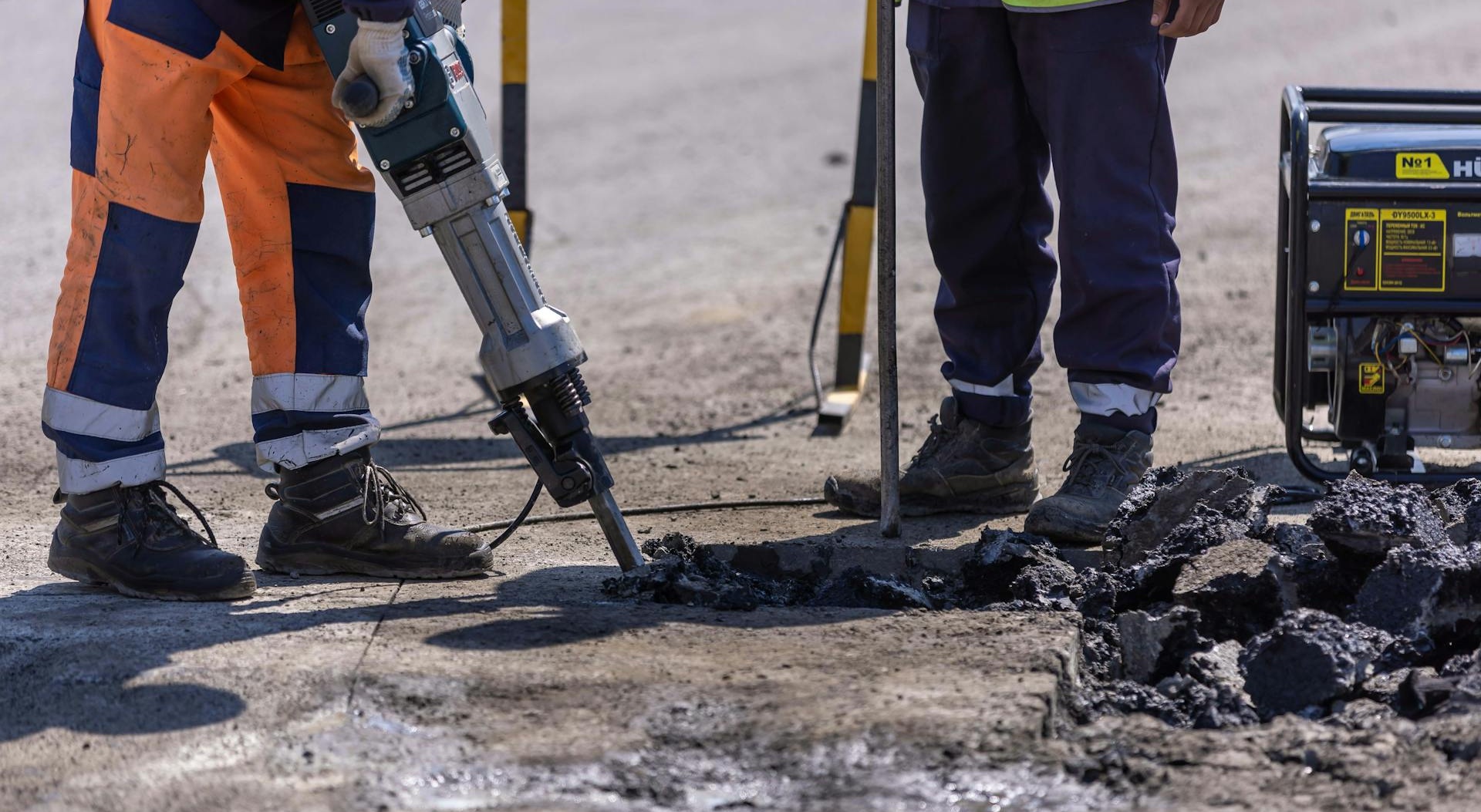Hand-Arm Vibration Syndrome: Common Symptoms and Effects
Hand-Arm Vibration Syndrome (HAVS) is a preventable but progressive condition caused by prolonged use of vibrating tools. Vibration exposure leads to vascular, neurological, and musculoskeletal damage, which can result in permanent disability.
Recognising HAVS symptoms early is essential because timely intervention can halt further damage. Workers and employers both share responsibility in identifying early warning signs.
Cold-induced finger blanching, tingling, and grip weakness should never be ignored. Understanding the symptomatology of HAVS enables targeted health surveillance and ensures safer work practices in vibration-prone industries.
Overview of HAVS Symptoms
Hand–Arm Vibration Syndrome presents three main symptom clusters—vascular, neurological, and musculoskeletal—that often overlap and worsen as vibration damage progresses.
These categories can be visualised as interconnected stages:
- Vascular: blanching, cyanosis and reactive redness in fingertips
- Neurological: tingling, numbness, loss of tactile discrimination and burning pain
- Musculoskeletal: reduced grip strength, hand/forearm pain, joint instability and loss of fine motor control
Early sign may mask emerging nerve and muscle damage; thorough monitoring across all three domains is essential to halt progression.

Vascular Symptoms in HAVS
Vascular damage in HAVS manifests as abnormal blood vessel responses in the hands and fingers.
White Finger episodes occur when fingers suddenly turn white and cold due to blood flow restriction, often triggered by cold temperatures. Cyanosis presents as a bluish tint, indicating persistent capillary constriction. Blanching and reddening cycles follow exposure and warming, where whitened fingers flush red as blood returns.
Initially, these symptoms appear sporadically but may progress to several daily episodes, severely affecting hand function and thermal comfort in cold environments.
These vascular disturbances reflect progressive endothelial dysfunction and smooth‑muscle hyperreactivity in small arteries. Left unchecked, they can lead to permanent fingertip skin and tissue damage.
Neurological Symptoms in HAVS
Hand–Arm Vibration Syndrome causes nerve injury due to repetitive mechanical stress, which leads to sensory disturbances and pain.
Tingling and numbness begin as intermittent “pins and needles” during or after tool use. As damage advances, tactile discrimination decreases, making it difficult to detect small objects or surface textures. Workers often describe persistent burning or electric shock-like pain, especially during rest periods. Clinical tests may show delayed nerve conduction, where signals travel slower along digital nerves.
This correlates with the severity of symptoms and predicts future sensory impairment and functional limitations.
Musculoskeletal Symptoms in HAVS
Hand–Arm Vibration Syndrome exerts excessive mechanical loads on muscles, tendons and joints, causing measurable functional decline.
Workers often experience a 15–20% reduction in grip strength, hindering manual tasks. Hand and forearm pain is common after repetitive tool use, presenting as deep aching or stiffness. Joint weakness can result in tool instability and frequent dropping. Fine motor control deteriorates, making precision work such as typing or fastening components increasingly difficult.
These impairments are often permanent and reduce a worker’s ability to perform essential job functions safely.
Symptom Progression Stages in HAVS
Hand–Arm Vibration Syndrome follows a predictable evolution from reversible irritation to irreversible damage.
Stage 1 – Early Reversible Signs
- Mild tingling and transient white‑finger attacks
- Minimal impact on daily work tasks
Stage 2 – Persistent but Potentially Reversible
- Frequent numbness and longer blanching episodes
- Noticeable grip struggles and occasional pain
Stage 3 – Irreversible Damage
- Fixed numbness and chronic pain
- Significant loss of grip strength and dexterity
- Permanent vascular and neural injury
Timely intervention during Stages 1–2 can halt or reverse symptoms; once Stage 3 is reached, clinical restoration is unlikely.

Identifying HAVS Symptoms on Site
Early HAVS detection relies on practical self‑checks and supervisor spot checks integrated into daily routines.
Self‑Check Techniques
- Pinch‑and‑Push Test: press the fingertip to assess sensation and capillary refill time
- Hand Diaries: log tingling, numbness or weakness at shift end to identify trends
- Grip Dynamometer Apps: smartphone‑paired devices track strength changes over time
Supervisor Spot Checks
- Quick quizzes on HAVS awareness during toolbox talks
- “Buddy Checks” where colleagues inspect each other’s hands weekly for blanching or swelling
Regular on‑site screening accelerates identification of early warning signs and triggers medical referral.
Clinical Assessment and Diagnostics for HAVS
Formal diagnosis of HAVS involves multiple clinical assessments. Cold provocation tests expose hands to cold air or water to provoke vascular symptoms like blanching or cyanosis. Nerve conduction studies measure how quickly electrical signals travel through digital nerves, identifying neurological delays.
Health surveillance is scheduled based on vibration exposure bands (A(8) values), with more frequent checks for higher exposures. Referral pathways begin with occupational health nurses, escalating to vascular or neurological specialists for definitive diagnosis and treatment planning.
Contributing Factors to HAVS Symptom Severity
Several factors exacerbate HAVS symptoms. Most common of them being;
High‑Vibration Tools: Chainsaws, grinders, pneumatic drills and hydraulic breakers deliver the greatest acceleration magnitudes.
Exposure Intensity & Duration: Daily A(8) acceleration values directly correlate with time to symptom onset and damage severity.
Environmental Triggers: Cold, damp workplace conditions exacerbate vascular attacks and nerve discomfort.
PPE and Work Practices: Lack of certified antivibration gloves, insufficient rest breaks and poor tool maintenance amplify vibration transmission.
Employers must address these variables through engineering controls, PPE, and training.
Documentation and Reporting of HAVS Symptoms
Accurate record-keeping supports health management and potential compensation claims for Hand–Arm Vibration Syndrome.
- Symptom Checklists: Laminate cards attached to toolboxes listing red‑flag signs like persistent numbness or repeated blanching.
- Tool‑Hour Logs: Central databases linking individual usage hours to vibration levels and maintenance records.
- Exposure Dashboards: Weekly A(8) tracking for each team against regulatory action and limit values for immediate intervention.
- Health Surveillance Records: Standardised templates capture clinical findings, referral dates and follow‑up outcomes.
Together, these systems ensure traceability and support accountability for employers and occupational health professionals.
Next Steps for Workers and Employers Regarding HAVS
Hand–Arm Vibration Syndrome prevention and management demands coordinated action by all stakeholders.
Workers
Report any tingling, numbness or blanching immediately.
Participate in daily self‑checks and scheduled health surveillance.
Employers
Implement regular training on HAVS risks.
Rotate tasks to minimise vibration exposure.
Provide certified antivibration gloves and maintain tools meticulously.
Health professionals play a critical role by conducting timely nerve and cold provocation tests and prescribing treatments such as physiotherapy or vasodilators. A coordinated effort ensures early detection and effective symptom management across all stakeholders.
Legal Recourse for HAVS Patients
Legal compensation for HAVS is available to affected workers under UK health and safety and personal injury laws. HAVS is a recognised industrial disease, and claims can be made through the Industrial Injuries Disablement Benefit (IIDB) or through civil litigation against employers who failed to control vibration exposure.
Eligibility often hinges on documented exposure, symptom records, and medical diagnoses. Claimants must show that their condition was caused or worsened by employer negligence—such as not providing antivibration gloves, failing to monitor A(8) values, or ignoring early symptoms. Timely symptom reporting and proper documentation significantly strengthen legal cases.